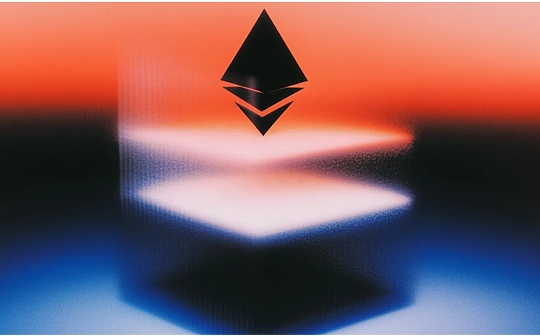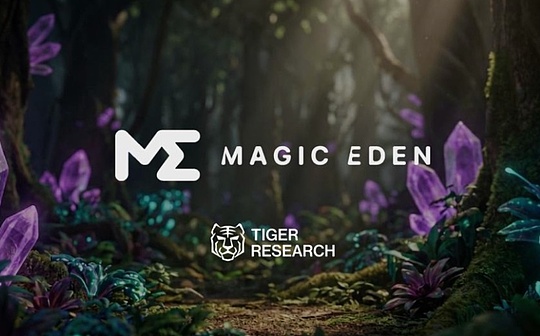
Source: insights4.vc, compiled by Shaw bitchain vision
As of August 21, public companies and private companies have raised more than $15 billion in funding for the DAT strategy in 2025, surpassing the size of about $6 billion to $8 billion in traditional cryptocurrency venture equity transactions.This marks a critical shift in cryptocurrency capital allocation, with companies turning to holding cryptocurrencies on their balance sheets rather than supporting startups.
DAT definition-a new corporate strategy
Digital Asset Reserve Treasury (DAT) refers to a corporate entity (usually a listed company with a smaller market capitalization) that mainly acquires and holds cryptocurrencies as reserve assets by raising funds.Unlike an exchange-traded fund (ETF) or funds, these companies use cryptocurrencies such as Bitcoin or altcoins as their primary reserve assets, aiming to benefit from rising cryptocurrencies’ prices and on-chain earnings.For example, MicroStrategy (now renamed “Strategy”) is the first and largest Bitcoin reserve company, currently holding more than 580,000 bitcoins on its balance sheet.
Non-ETFs – Key Differences
DAT is different from passive investment tools.They are not spot ETFs, trusts or hedge funds—there is no mechanism to directly redeem shares for cryptocurrencies, and they usually take strategic initiatives (such as pledges, verifications, etc.).They are also different from cryptocurrency miners and exchanges, whose cryptocurrency holdings are derived from business operations; they also contain cryptocurrencies purchased with existing cash rather than raising funds, like protocol token reserves or corporate reserves.DAT explicitly raises new funds to buy cryptocurrencies for long-term holdings, and actually serves as an operating enterprise with a cryptocurrency-centric reserve strategy.
Financing trajectory so far in 2025
In mid-2025, DAT’s financing activities accelerated significantly.In July, monthly DAT financing peaked at about $6.2 billion, thanks to a huge deal in several Bitcoin and large altcoins.As of August, more than 20 publicly traded companies have launched DAT strategy programs, raising over $15 billion in total.By contrast, the volume of venture capital transactions in traditional cryptocurrencies has dropped significantly – with only 856 startup venture capital transactions reaching in the first eight months of 2025, a 56% decrease from 1933 in the same period in 2024.(Total venture capital in USD is approximately $8.05 billion, basically the same as last year, but this figure in 2025 includes a one-time transaction of Binance of $2 billion; if not included in this transaction, the total venture capital is approximately $6.05 billion, down about 26% year-on-year.) This suggests that, at least in the short term, DAT has outstripped venture capital in scale as investors are redistributed funds.
Drivers – liquidity, premium and accounting changes
Several factors are incentivizing issuers and investors.
-
Instant liquidity: Investment through open DAT provides liquidity and pricing by market capitalization, which is different from traditional venture capital that lacks liquidity.
-
Net Asset Value (NAV) premium “flywheel”: Many DAT stocks trade higher than the market capitalization (mNAV) of their cryptocurrency holdings.In fact, investors pay extra fees to get instant investment opportunities.This premium allows DAT companies to issue more shares at high valuations to buy more cryptocurrencies, creating a self-reinforcement cycle that drives up the net asset value per share.
-
More favorable accounting treatment: U.S. GAAP has just adopted fair value accounting for cryptocurrencies (FASB ASU 2023-08, effective in 2025), which means companies can market cryptocurrency assets every quarter, with gains/losses included in profit and loss.This eliminates old impairment charges issues and increases profit and loss transparency, giving financial executives greater confidence in cryptocurrency reserves.
-
ETF Agents and Strategic Narratives: Some companies position themselves as “operational” alternatives to spot ETFs – providing stock upsides, potential technical links, and the narrative charm of “bitcoin/altcoin strategy” that is sometimes favored by public stock investors, thus achieving higher P/E ratios.
Focus on altcoins – the world outside of Bitcoin
Although Bitcoin still holds a leading position in the reserve treasury of many businesses, people unexpectedly turned to other tokens during the 2025 boom.Enterprises are targeting high-growth Layer1 and protocol tokens: For example, the HYPE token of the decentralized financial exchange Hyperliquid became the second largest acquisition asset, with multiple DAT treasuries investing a total of about $1.5 billion.Others include SUI and SOL, Toncoin (TON), BNB, Fetch.ai (FET), etc. – usually supported or collaborated by the Token Foundation.This diversification suggests that businesses are seeking high returns (sometimes earnings) from altcoins, not just the stability of “digital gold” like Bitcoin.
It is worth noting that some altcoins’ DAT reserves are arranged with token issuers: For example, Upexi, which listed in the United States, obtained Solana tokens from investors in the form of notes; ALT5 Sigma received $750 million in Trump-related WLFI tokens from the Token Foundation as part of a $1.5 billion reserve transaction.These collaborations suggest that the foundation is using DAT tools to bring its tokens to the open market.
Market size: Comparison of DAT and cryptocurrency venture capital from 2025 to the present
As of August 2025, DAT’s financing amount exceeded that of traditional cryptocurrency venture capital.The following shows the monthly financing amount of DAT strategies and non-DAT venture capital in the cryptocurrency/blockchain field:
Monthly Trends (2025)
DAT financing performed mediocrely early in the year, but soared in the second and third quarters, and peaked at about $6.2 billion in July.By contrast, venture capital (equity investments in cryptocurrency startups, excluding token sales) is on a downward trend each quarter.From April to July, with the completion of several large transactions, DAT’s financing significantly exceeded venture capital.For example, the total DAT financing of about $6.2 billion in July far exceeded the size of venture capital for the month (the venture capital was about $1 billion, with a persistent downturn) – suggesting that public funds flowing into the crypto space through DATs far exceeded private venture capital.In August 2025, DAT’s financing is expected to remain high (nearly $2 billion in the previous weeks, thanks to TON and WLFI deals), while venture capital has not seen significant growth.
Total cumulative amount from the beginning of the year to the present
As of mid-August 2025, companies have raised more than $15 billion in funding for the DAT program.By comparison, over the same period (January to August), traditional cryptocurrency startups totaled about $6.05 billion in venture capital (excluding that $2 billion Binance Ecosystem Fund transaction).Even if this abnormal transaction is included, the total amount of venture capital is about $8.05 billion, which is still about half of the DAT.In terms of transaction count, 856 venture capital transactions have been recorded so far this year, with an average transaction size of about $7 million to $8 million, and DAT financing is often one-time, large transactions (several transactions above $100 million).This highlights how a few large-scale reserve transactions have changed the balance of funds.
The total amount of one-time huge financing impacts
It is worth noting that both categories have outliers.On the venture capital side, Binance’s $2 billion financing (March 2025) pulled up the total in the first quarter.On the DAT side, ALT5 Sigma’s $1.5 billion financing (August) and Mill City’s combined $950 million financing (July/August) significantly boosted the total amount of funds.Even on a standardized basis, DAT financing is now slightly ahead.
Geographical distribution
In 2025, nearly 90% of DAT capital comes from the U.S. market (Nasdaq and the U.S. division of the New York Stock Exchange), as the U.S. is home to most micro-listed companies that turn to cryptocurrencies.There have been some transactions in other regions: for example, there has been some activity in Canada (Toronto’s Ether Capital has increased its ETH reserves, albeit a smaller scale); similar situations in Asia, such as IVD Medical, which is listed in Hong Kong, purchased $19 million in ETH as reserves.But overall, the United States has been the center of DAT financing—which may be due to the depth and regulatory arbitrage in the U.S. capital markets (U.S. rules allow such transformations under disclosure requirements, while some other jurisdictions may implement stricter regulatory or shareholder approval requirements).There is little direct DAT financing in Europe, partly because of waiting for the clarity of regulation under MiCA (discussed later), but venture capital in Europe in cryptocurrencies also declined in the first half of 2025.
Cryptocurrency Market Impact
The $15 billion inflow of funds into crypto assets through DAT provides support and liquidity for prices, especially for the specific tokens purchased.For example, as of August, the Ethereum treasury held more than 3 million ETH, pushing the ETH price to exceed $4,300 (DAT held 3.04 million ETH, worth about $13 billion).Similarly, Bitcoin-focused DAT (mainly purchased by Strategy) has added thousands of BTC — and the Strategy alone bought about 4,020 BTC in May with $427 million of the ATM stock it sold.These purchasing behaviors by DAT undoubtedly helped boost cryptocurrency prices in 2025, offsetting some of the selling pressures brought by venture capitalists to distribute tokens.
Comparison of venture capital trading portfolio and DAT trading
In 2025, traditional cryptocurrency venture investment transactions have also changed.Due to the reduced number of transactions completed (especially in the early stages), the distribution of investment phases tends to be later stages due to the reduced number of transactions (especially in the early stages) – many venture capital funds are used to support more mature projects or be in troubled situations rather than seed rounds.As of this year, the median transaction size of crypto VCs has risen to about $8 million (about $4 million in 2024), with the 75th percentile trading size of about $25 million (reflecting some of the larger Series B and C rounds that do occur) Meanwhile, DAT financing is more dualistic (for public companies, each round is a large round).DAT funds are often immediately put into liquidity tokens, while venture capital funds may stay in the hands of startups for several years.This immediacy makes the DAT funds manifest in the market (buy tokens immediately on exchanges or over-the-counter trading platforms) different from venture capital (used to pay wages, R&D, etc.).
DAT Trading Segment Analysis
By geographic location
The United States will lead the DAT release in 2025.Of the top 20 DAT companies, at least 15 are incorporated in the United States and are on U.S. exchanges(Nasdaq or New York Stock Exchange)Listed.These companies include Strategy, Marathon Digital, Riot Platforms (Bitcoin Reserves are part of its business), and a new wave of companies that turn to cryptocurrencies like Eyenovia (Hyperion), Lion Group, SharpLink, Mill City.Despite the complex regulatory environment in the United States, companies are not explicitly prohibited from holding cryptocurrencies, which allows these companies to perform such operations in compliance with standard SEC disclosure requirements (with fair value accounting).
Asia is the second region: Singapore-based Lion Group Holding (NASDAQ: LGHL), for example, has set up its $600 million facility in the U.S. market.The Hong Kong market has limited but compelling activity – for example, Hong Kong-listed Upexi (based in the United States) chose to base some of its operations in Tampa, Florida while raising funds in the United States; IVD Medical purchased ETH directly as part of its strategic investment.
Europe and beyond: In 2025, few large EU listed companies held crypto assets on their balance sheets, possibly due to the cautious attitude of the board and the upcoming Crypto Assets Market Ordinance (MiCA).The only exception is the smaller Dutch market maker Flow Traders, which says it holds a small amount of cryptocurrency on its balance sheet, but this is operating liquidity, not funds raised.We expect the first real DATs in Europe to appear in late 2025 or after the MiCA rules of 2026, but as of August 2025, this trend remains US-centric.
By financing instrument
DAT issuers employ a variety of financing tools, which are usually tailored to the circumstances to circumvent shareholder approval triggers and attract investors by providing upside options.The specific classification is as follows (approximate quantity in the main transaction):
-
PIPE (Private Equity Investment): This is the most common structure – for example, Eyenovia issues convertible preferred shares and warrants in PIPE, or Verb issues common shares at a market price of $558 million.These transactions are usually conducted at or close to the current market price (to meet exchange rules) and include warrants or conversion features to attract investors willing to invest in cryptocurrencies.
-
ATM Issuance:Strategy adopts a continuous stock issuance program in the market.Strategy (MSTR) established a massive $750 million ATM program in 2023 and expanded in 2025 (even creating new preferred stock categories STRK, STRF for Bitcoin-related financing) — selling $427 million worth of stock in a week in May 2025.ATM issuance allows for flexible and low-key stock issuance to the market, and Strategy has raised billions of dollars in this way to buy Bitcoin in several years.
-
Register direct issuance and shelved issuance: Some companies submitted registration statements for listing and quickly completed large-scale sales.An example is the $750 million registered direct issue of ALT5 Sigma (100 million shares, $7.50 per share) – conducted simultaneously with private equity.Similarly, Mill City Ventures announced its acquisition of Sui after selling 83 million new shares (approximately $450 million) through a registration direct offering.
-
Equity quota arrangement: This is an arrangement by which investors promise to purchase a certain amount of stocks over a period of time, usually through the Reserve Equity Allocation Agreement (SEDA).Windtree announced a $500 million equity allocation arrangement with an investor (in addition to the initial allocation); Mill City also reached a $500 million equity allocation arrangement with Alliance Global Partners.These arrangements provide “ready available” funds, but generally require stock prices to remain above a certain level (Windtree’s placement arrangement is unusable after WINT shares fall below $1).
-
Convertible bonds: A notable example is the $150 million Solana-backed convertible bond issued by Upexi with a face rate of 2% and a maturity of 24 months.The bond was converted at $4.25 per share (above the market price at the time) and if it went well, it would actually be equivalent to a deferred equity offering.Investors actually paid for the bond with SOL tokens (which is an innovative move).Convertible bonds are attractive because they avoid immediate dilution (not offering voting shares in the early stages) and can be designed to not trigger the 20% rule of Nasdaq if priced properly.However, it increases leverage and refinancing risks.
-
Warrants and subscription rights: Warrants are included in many transactions.For example, Eyenovia issued 30.8 million warrants with an exercise price of $3.25 (equivalent to 200% of the private equity investment share) – if its strategy is successful, the exercise of the warrant may bring more than $100 million in the future (but dilutes the equity).Warrants are often used to compensate private equity investors for risks.
-
Credit Arrangements and Loans: While not so common, the $600 million “credit arrangement” Lion Group received from ATW is essentially a promised loan to buy tokens.These terms are not fully disclosed, but are likely to be converted or secured in tokens.Another example is Marathon Digital’s use of a term loan secured by Bitcoin in early 2023; however, miners are outside our DAT definition.These debt-based approaches are attractive when companies want to avoid immediate dilution of equity or expect token return to be sufficient to easily cover interest.
By investor type
The investor group of DAT transactions connects traditional financial and crypto-native enterprises.We have observed four main types of investor:
-
Venture capital and hedge funds focused on cryptocurrencies: Companies such as Pantera, Polychain, Paradigm, Galaxy and Electric Capital have all participated in DAT transactions (for example, Pantera has invested in SUI, Galaxy has invested in Mill City, and DCG has participated in some BTC investments through affiliates).These investors understand token economics and often strive for board seats or advisory roles (for example, Pantera’s Cosmo Jiang often comments on DAT strategy).
-
Cross-border investors and traditional venture capital: Investment institutions in the field of pan-tech (such as Ribbit Capital, which once led multiple rounds of fintech financing, participated in Verb’s TON transactions) and growth equity funds (ATW Partners participated in multiple transactions).They are attracted by the perspective of “high-growth assets on public platforms”.
-
Token Issuers and Related Parties: In some cases, the token issuer or foundation itself is the participant.The Hyperliquid Foundation may facilitate the issuance of HYPE (non-cash support, technology integration, etc.).Binance’s affiliates (Build and Build Corp) directly invested $60 million in Windtree and agreed to additional investments—in fact, injecting funds into BNB’s public investment tools.The Sui Foundation has established a “strategic relationship” with Mill City, suggesting support (perhaps priority token allocation).
-
Family office and high net worth investors: Some deals (especially Verb’s TON) have attracted family offices like Vy Capital (linked to Telegram) and Kingsway’s LP, as well as cryptocurrency giant whales (media reports that “several well-known cryptocurrency founders” have invested in TON Strategy Co).These investors view DAT as a quasi-index bet on a specific cryptocurrency ecosystem.They usually invest through private equity to gain equity exposure that may be liquid in the future.
Investment scale and participation
Venture capital funds typically invest medium-sized funds ($5 million to $50 million) in these structures – for example, Pantera reportedly invested approximately $20 million to $30 million in Mill City (based on the distribution of $83 million shares of the four funds).In Verb’s deal, Kingsway led a big investment (rumored to be around $50 million), while major investors like Blockchain.com, Ribbit, etc. may have each invested between $20 and $40 million.More than 100 other investors have participated in smaller investments (some of which range from $1 million to $5 million).
Strategic token partners sometimes contribute in kind: Big Brain Holdings provides Upexi with a portion of SOL rather than cash.Similarly, the founders of World Liberty exchanged WLFI tokens for the equity value of ALT5 Sigma.It is worth noting that some VC funds use their “current” funds (hedge funds or cross-border instruments) to participate in DAT rather than their core non-current VC funds – which enables them to trade or hedge.For example, Hack VC admits investing idle cash in DAT stocks for profit.Ed Roman of Hack VC said they view DAT as a temporary cryptocurrency exposure until they find the right startup deal.This suggests that some participation may be short-term or opportunistic.On the other hand, Neoclassic’s Michael Bucella and others said they expect to hold until the market reevaluates the tools (and focus on exit opportunities when the net asset premium compresses).As far as the investment instruments used are concerned, venture capital and hedge fund investors usually invest directly through PIPE (usually they will obtain restricted stocks or preferred stocks that will be registered later).A small number of investors who own multiple LPs will participate through a special purpose carrier (SPV)—for example, a SPV can be set up to invest in a specific DAT and are responsible for ultimately distributing the proceeds of shares or sale to the LP.
Impact on venture capital allocation
These flows of capital clearly indicate the transfer of capital: funds that could have been used to fund 10 startups, but flowed into the token reserves of a listed company.Investors’ reason is that if the token price rises, they can gain liquidity and profits denominated by market capitalization, and potential returns from premiums.However, this raises concerns: If $3 billion in venture-style funds flow into DAT in 2025, then the funding used to fund new Web3 infrastructure or decentralized applications will be significantly reduced.Some venture capital partners are explicitly concerned that DAT is crowding out innovation funds.In Section 5 (Analytical Questions), we will explore this issue again and try to quantify this crowding effect by investor category (e.g., how much of Paradigm’s new investment is invested in DAT rather than startups).
Event Research: Stock Price Reaction and Abnormal Returns
We analyzed the share price performance of publicly traded DAT issuing companies before and after key events, specifically, including the announcement of financial strategies and, if applicable, subsequent disclosure of crypto asset purchase information.Our event study covers approximately 12 companies and calculates cumulative anomaly earnings (CARs) over two time periods: day 0 (announcement date) and 5 trading days after the announcement, as well as before and after the major deployment date (when the company confirms the purchase of crypto assets).
Here are the research results we summarized:
The market’s initial response to DAT announcements is generally very positive, reflecting unexpected factors and speculative enthusiasm.On average, the stocks in our sample rose 38% on the day of the announcement (the median was about 20%), far exceeding the market volatility (we used the Russell 2000 as a benchmark, which was flat or rose only about 1% on the day of the announcement, so these are real abnormal gains).
For example:
-
Lion Group (LGHL): On June 19, 2025, the company announced a $600 million Hyperliquid token reserve plan, an increase of 19.6%.The stock price rose from about $2.80 to $3.35, with trading volume reaching 50 times the normal level.The CAR for the next 5 days is about +15% (partially given up as the trader takes profit).
-
Eyenovia (EYEN): This stock is interesting – On June 17, 2025, the company announced a $50 million HYPE token strategy with an issue price of $3.25 per share.The stock closed around $1.40 before the news was announced.In after-hours and pre-market trading, EYEN initially soared more than 100% (reported to be up 134% at one point in the session), but by the next full trading day (June 18), the opening price was about $2.70 and closing price was about $2.10, a net increase of 50% from the pre-announcement.Stock prices fluctuated significantly: A report from AInvest said that pre-market stock prices fell 24% on June 19, probably because the stock price rose too much and then followed by a pullback.Nevertheless, Eyenovia’s CAR (0,+5) is still about 40%.Investors are excited about the large infusion of funds a small biotech company and the potential gains from cryptocurrencies, but concerns about equity dilution limit the gains.
-
Verb Technology (VERB): On August 4, 2025, Verb announced the acquisition of TON for US$558 million and rebrand.The stock (previously about $2) surged to about $6 at its intraday high on August 4 (up more than 200%), with huge trading volume.The closing price rose about 120% on the day.However, the stock price fell sharply the next day, with a cumulative increase of about 50% in five days.This huge deal (relative to the market value of less than $50 million before Verb’s announcement) means a large-scale equity dilution is about to occur, which suppresses the continued rise of the stock price.
-
Mill City (MCVT): On July 24, 2025, the company announced its first $450 million SUI transaction, with its share price soaring from about $1.85 to $5.00 (+170%) in a few days.Specifically, the first day rose 82%, with a cumulative increase of 165% in one week.It is worth noting that when the second $500 million financing was announced on August 2, the share price fell 11% that day, suggesting that subsequent financing could be bearish (due to equity dilution) once the financial strategy turns to the point where it is known.
-
Windtree (WINT): After the announcement of the BNB strategy on July 16, 2025, WINT rose 32% in two days (from about $0.50 to about $0.70), but began to decline again by day 5 (about 10%).In Windtree’s case, the initial excitement was almost immediately replaced by selling pressure, as savvy investors expressed doubts about its execution.In fact, within a month, WINT fell more than 90% from its peak, and this unusual plunge we will discuss separately.
Overall, the first-time cryptocurrency reserve strategy changes often lead to a strong positive stock revaluation.Small-cap traders tend to flock in, almost seeing the stock as a proxy for the tokens in question or the next “cryptocurrency investment opportunity”.The existence of large-scale financing (e.g., “Get X million to buy cryptocurrency”) is crucial, which shows its credibility (someone is funding the matter) and that there will be a lot of buying.These “zero-day” reactions highlight the transformative nature of such events in the market’s eyes.
Share price fluctuations after announcement
DAT performed unevenly after the stock price surged.Many DAT stocks experience high volatility and partial mean regression after their initial uptrend.During the 5-day window period starting on Day 0, we found that the average cumulative excess return (CAR) was 25%, which was lower than the average of 38% on Day 1, which means some of the returns were given.For example, Lion Group retained most of its earnings (5-day CAR is 15%), while Eyenovia turned negative within 5 days of announcement (early buyers sell, with cumulative excess yield by day 5 of about -20%, starting from the initial soar).The difference is huge: Some stocks continue to rise (Mill City continues to rise for the week as more investors learn about the news and end up 165% in the week), while others quickly reverse (Windtree’s earnings evaporated in 10 days).
Statistical analysis shows that profit settlement and valuation reality tests have begun to appear.In addition, short sellers seem to have emerged – for example, short selling interest surged after Verb’s share price surges as traders bet that the stock price will fall due to the upcoming equity dilution.“Buy rumors, sell facts” performance at deployment: Another incident is the company actually performing cryptocurrency purchases and disclosures (via Form 8-K or press release).Usually, by actual purchase, the stock reaction will be relatively flat or even negative—the market may have digested the news, or the price movement of the token affects the stock.Case study: MicroStrategy’s stock price has historically been positively drifting when it announced multiple incremental purchases of Bitcoin; but in 2025, its correlation with Bitcoin means that if Bitcoin falls due to news, MSTR will also fall (for example, in one of its first quarter 2025 purchase updates, Bitcoin fell from its highs, and MSTR stock fell about 8% on the day, roughly equivalent to Bitcoin’s decline, not an “abnormal” decline beyond the beta coefficient).
For DATs that focus on altcoins: SharpLink announced an additional purchase of 83,562 ETH (valued at $264.5 million) on August 5; Interestingly, the price of ETH broke off the high that day, and Sharplink’s stock price fell about 10% after the announcement.This may be a “news sell-off” reaction after the stock price rose.Similarly, BitMine Immersion announced a huge purchase of 208,000 ETH on August 7, and its share price also fell about 7% due to the decline in ETH price (BitMine’s news was released during the overall cryptocurrency pullback).Windtree has never announced a large purchase completed – the closest to being the disclosure of its $60 million BNB purchase agreement; the stock has since been on the decline after a brief rise, so there has been no positive volatility.An obvious pattern is: When the underlying cryptocurrency rises, DAT stocks usually rise more and vice versa.These stocks have higher asset beta coefficients.For example, in mid-August, Bitcoin rose by ETF rumors, and Strategy rose by about 15% in one day (beta > 1).In late June, the HYPE token fell about 20% (from $45 to $36) after the initial boom, and Eyenovia’s share price also fell about 25%.Therefore, event research must control the fluctuations of the underlying tokens to separate out abnormal returns.Our analysis accomplishes this by reverting stock earnings to token earnings before and after the event.In many cases, the impact of the initial announcement is much greater than the predicted magnitude of the token beta value (because the token has not been purchased yet).But after the funding pool is in place, the stock trend becomes highly correlated with token performance (i.e., announcements about further purchases of tokens are no longer too surprising, but simply increase the exposure to the token).
Long-term performance: It’s too early to draw conclusions, but looking at the performance of these stocks so far this quarter: Since the transformation, most stocks have outperformed the wide range of crypto stock indexes (such as the Galaxy crypto index).For example, Lion Group rose about 150% from pre-transformation to late August, outperforming many cryptocurrency mining stocks.Mill City has risen about 165% since July 1.SharpLink (transformed in June) rose from about $4 to $12 in early August (up 200%), though it volatility is high.On the other hand, Windtree is almost a total loss (down 95%) for those who buy when the transformation rebounds.Eyenovia was roughly flat to a slight gain (from $1.50 to around $1.80) before the transformation – it had risen sharply but fell back.While not a 2025 transformation (it is a traditional case), Strategy has risen by about 120% so far in 2025, consistent with Bitcoin’s bull market trend (and benefiting from eliminating adverse accounting effects).
Abnormal returns after capital investment: We also looked at whether there was any deviation after the company invested in purchasing cryptocurrencies during the 5-day window after announcing “buying X Bitcoin at the price of Y”.In theory, once cryptocurrencies appear on the balance sheet, one might expect any remaining discount to shrink or expand with respect to NAV.
Our results
There is no continuous positive abnormal returns after deployment; if so, it is only a slight poor performance.This suggests that the major stock price rise occurs before or when the purchase expectation (the premium forms in the expectation), and once the fund pool is filled, arbitragers or risk aversion sentiment may intervene.For example, Genius Group announced on July 20 that its reserves had exceeded 100 bitcoins — its shares did not fluctuate much at the time of this particular news, as they were known to be buying.Announcements on Marathon Digital or Hut 8 Monthly Bitcoin production if the situation is good may lead to a slight increase in the share price, but these are operational and not related to fundraising.
Market efficiency and speculation
The event study not only reveals the inefficiency of the market (or initially overreacted by hype) but also reflects the ultimate arbitrage behavior (stock prices tend to be consistent with fundamentals/token values).Taking Windtree as an example, the market may have misjudged this turning point as a positive factor at first, but as fundamental issues such as compliance issues and equity dilution emerged, the market quickly corrected.In cases like Verb or Eyenovia, it is difficult for the market to evaluate the relationship between huge equity dilution and asset appreciation, resulting in large fluctuations in stock prices.
Post-event deviation related to premium
We found an interesting correlation: those stocks that quickly rose to very high mNAV premiums (e.g., >1.3x NAV) tend to perform poorly (mean regression), while those that remain near NAV or have a moderate premium perform more stably after the event.
This suggests that the existence of arbitrage funds and rational investors limits excessive fanaticism: For example, if a stock is trading at 1.5 times the value of its cryptocurrency, short sellers will step in.In July, some hedge funds reportedly shorted when BitMine and SharpLink premiums soared, hedging by long ETH – in fact, betting that the premium would drop.By mid-August, BitMine’s premium did drop slightly, and SharpLink’s premium also dropped.Instead, Lion Group did not immediately have a crazy premium (partially because its transactions were not all equity – but a loan arrangement), so its earnings remained better.
Analysis of premium/discount of market net asset value (mNAV) and price
DAT) stocks typically differ from the net asset value (NAV) they hold, similar to closed-end funds.We track the mNAV ratios of major DATs to evaluate premiums, discounts, and mechanisms that affect these gaps.
General premiums in 2025: As of August, most active DATs traded above net asset value (NAV).Strategy (MSTR) has a premium of 10%-15%, partly because its value is reflected in the alternative value of liquid BTC.Among Ethereum investment vehicles, SharpLink trades about 18% higher than its net asset value and BitMine Immersion trades about 14% higher.New entrants like Mill City once reached about 1.2 times their net asset value, and then gradually approached parity.Lion Group’s shares rose 20% after its first $10 million buy, reflecting its expectations for net asset value growth rather than current holdings.
Discount transaction case: A few stocks traded at a substantial discount.Ether Machine (DYMX) holds about $1.27 billion in ETH, but has a market cap of just about $177 million (86% discount), which may be due to its structure and potential selling pressure.BTCS trades at about 24% lower than its net asset value due to governance and liquidity issues.Windtree’s trading price before delisting was also much lower than the implied cash value, as investors expressed doubts about whether its transaction could be completed.
Dynamic changes over time: When the announcement was released, due to the high market popularity and the net asset value had not been invested, the premium reached its peak, and then it was compressed with the acquisition of assets.SharpLink fell from about 1.3 times net asset value to about 1.1 to 1.2 Strategy’s premium usually expands during bull markets (up to 1.5 times) but turns to a discount when the market is down.The precedent for GBTC (from a premium of 40% to a discount of 40%) highlights market sentiment risks.
Market Outlook: Experts expect prices to tend to be parity.Pantera and Hypersphere expect most DAT prices to be equal to or below the net asset value (NAV), and only the leading institutions (DAT reserves for BTC and ETH) can maintain a slight premium.By 2026, it is predicted that the price of Bitcoin DAT will be close to 1.05 times, Ethereum will be around 1.10 times, while smaller institutions will face discounts or forced mergers.
Mechanism and governance: Unlike ETFs, DAT lacks a redemption mechanism, so the spread can only be compensated by issuance, repurchase or arbitrage.The issuance of shares at a premium (such as MSTR) can increase the net asset value, but there is a risk of excessive premium; repurchases are rare due to internal control.Hedge funds may short DAT at premiums and go long when cryptocurrencies rise, although borrowing is usually small.Some companies use structured financing (such as Upexi’s SOL notes) or locking mechanisms to stabilize value.Governance quality, transparency and audits can also affect whether a company trades at a premium or a discount.
Similarities of closed-end funds:DAT is similar to closed-end funds, with large discounts in bear markets due to no redemption.Large investors may eventually take advantage of this extreme discount through acquisitions.
Movement of funds and investor participation
Various types of capital are pouring into DAT’s balance sheet, covering crypto-native professional institutions, Wall Street cross-border participants, and token foundations.The main investment groups and their typical investment scales are as follows:
1. Encrypted native venture capital funds
Pantera, Polychain, Paradigm and DCG will selectively lead the DAT round, usually from more liquid side pocket funds rather than 10-year funds.Pantera holds approximately $50 million in Mill City; Paradigm can easily exceed $20 million.
2. Hedge funds and cross-border traders
Galaxy Digital, Brevan Howard Digital, Point72 Crypto, Jump and DWF Labs treat DAT as liquidity trading.Transaction amounts range from $10 million to $55 million, usually combined with token flow or hedging.
3. Token Foundation and Affiliates
Binance-owned Build and Build Corp. injects $80 million into Windtree’s BNB project.The TON Foundation leadership injects money into Verb, while the Sui Foundation works with Mill City.This support is usually in the form of liquidity, governance power or board seats, rather than simply cash.
4. Traditional venture capital and family offices
Ribbit, Vy Capital and Kingsway view DAT as growth equity plus open market upside.Kingsway’s lead in Verb may have exceeded $50 million.Rich cryptocurrency founders will also seize opportunities to participate in investment.
5. Strategic crypto company
Exchanges and custodians will purchase a small amount of equity to lock in the service relationship.For example, customers of Blockchain.com, Kraken Ventures, BitGo and Coinbase Custody.Typical transaction volumes range from millions to tens of millions.
How do they invest?
Almost all investments are made using private placement of common or preferred stocks, post-listing private placement (PIPE) notes or warrants.Some institutions negotiate token allocations, but most rely on companies to hold reserves.
Market Influence
Funds flowing into DAT coincide with a significant drop in seed rounds, while the overall scale of cryptocurrency venture capital remains stable.Investors like Hack VC see DAT as a liquidity deposit point before the emergence of early-stage quality startups, but if DAT continues to perform well, it may permanently divert funds from early-stage startup projects.
in conclusion
As of August 21, 2025, DAT has raised more than traditional cryptocurrency venture capital, with more than $15 billion raised, while venture capital is about $6 billion to $8 billion, marking a clear shift toward on-balance sheet exposure.This growth is driven by liquidity in the open market, a net asset value premium that reduces the cost of capital, and fair value accounting, although these support factors are cyclical and may shrink.
DAT stocks pose high risks, including dilution and leverage, thin trading and custody, concentration of single tokens, and a changing regulatory environment.In the short term, DAT funding flows appear to squeeze some early funds and support token prices; if ETF access scope is expanded, DAT premiums and differentiation may weaken.Executives should view DAT as an opportunistic liquidity exposure and implement strong governance, financing discipline and NAV price regulation while preparing for situations where DAT and startups compete for funds.






